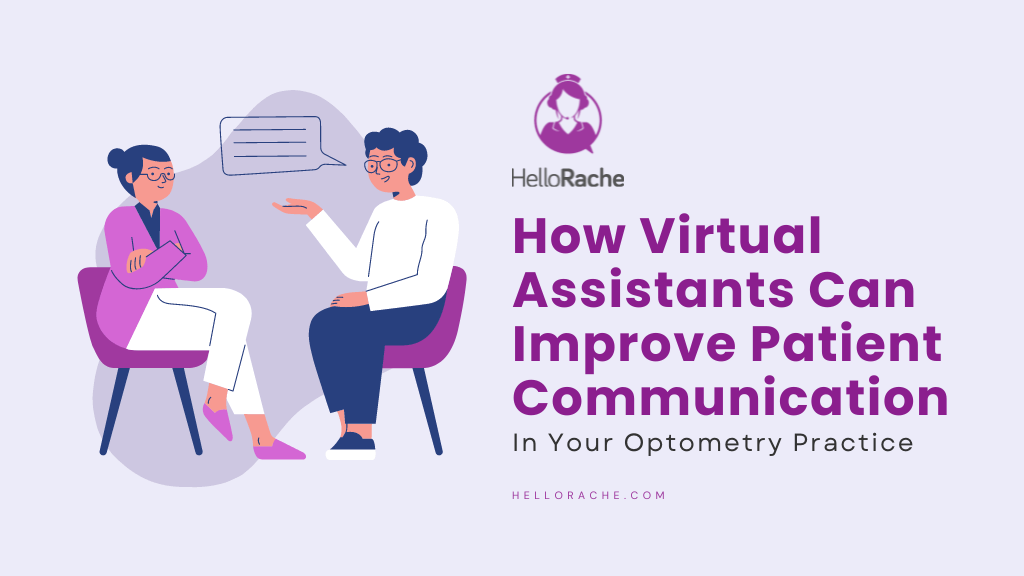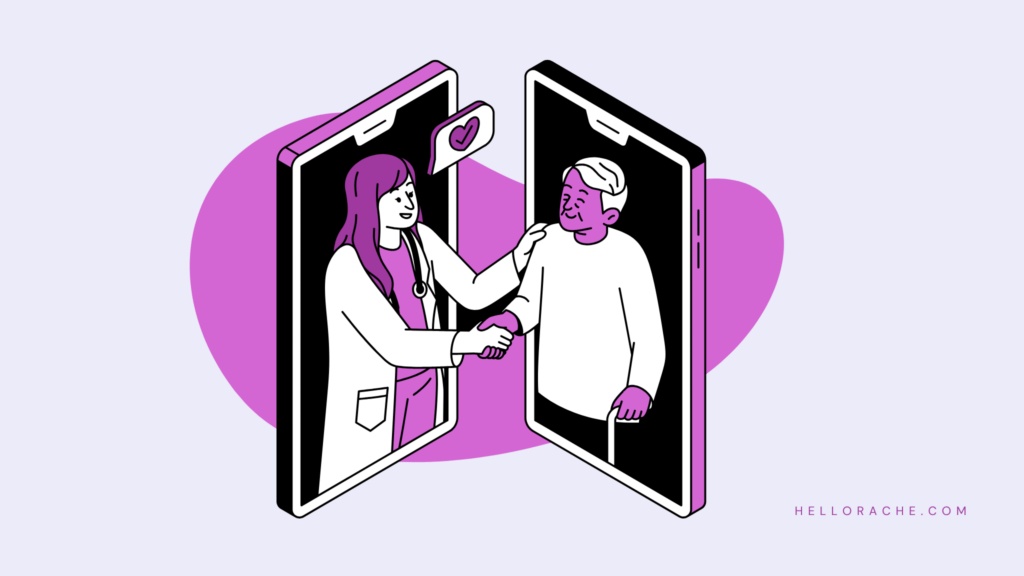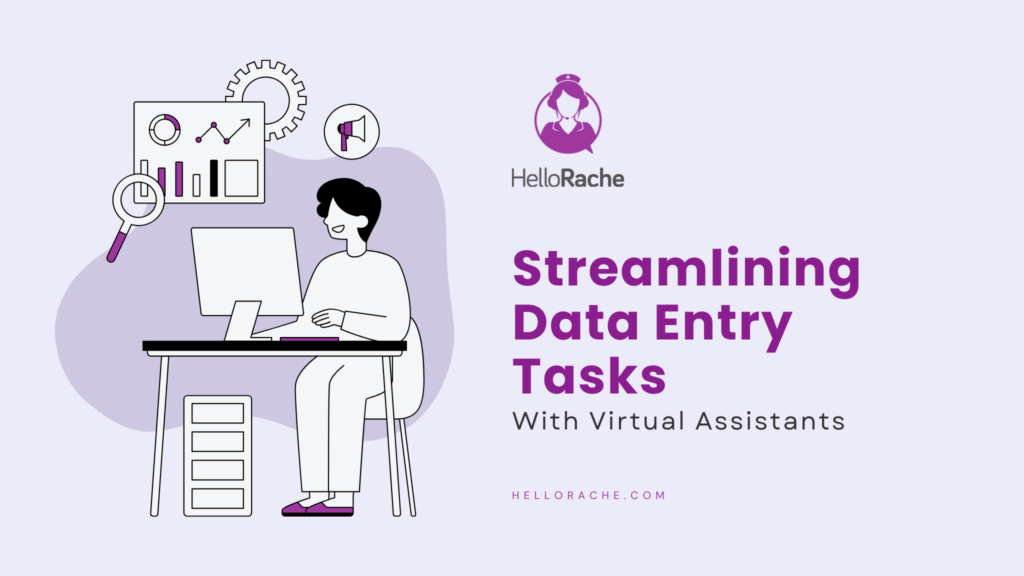Patient communication is a cornerstone of excellent healthcare, and your optometry practice should always strive to enhance your communication. Optometry, however, is a busy service, and the demands on optometrists mean that communication can often fall short. This is to the detriment of both the patient and your practice. Accordingly, you need a solution which will maximize the efficiency of your communication. And this can be found in the form of an optometry assistant.
Behind the Lens: Meet the Optometry Assistant
Optometrists can’t run an optometry practice on their own, they need help. After all, with burnout a major risk for optometrists, it’s important their wellbeing is preserved. This is where an optometry assistant comes into the picture. An optometry assistant plays a crucial role in the daily operations of an optometrist's practice. Working closely with optometrists, they can provide administrative support to facilitate smooth and efficient patient care.
With significant experience at their disposal, an optometry assistant can handle numerous duties to help your practice become a more effective operation. From managing patient appointments, handling phone inquiries, and maintaining patient records, an optometry assistant can do it all. In many cases, they’re the first point of contact for your patients, so it’s here that their experience allows them to put your patients at ease and feel reassured. On top of all this, they are often responsible for processing insurance claims and managing billing, preserving your finances.
An optometry assistant will prove to be a critical part of your practice’s team, taking control of administrative duties to let your optometrists focus on patient care. Central to the role of an optometry assistant is a need for excellent communication skills, attention to detail, and a strong understanding of optometric terminology.
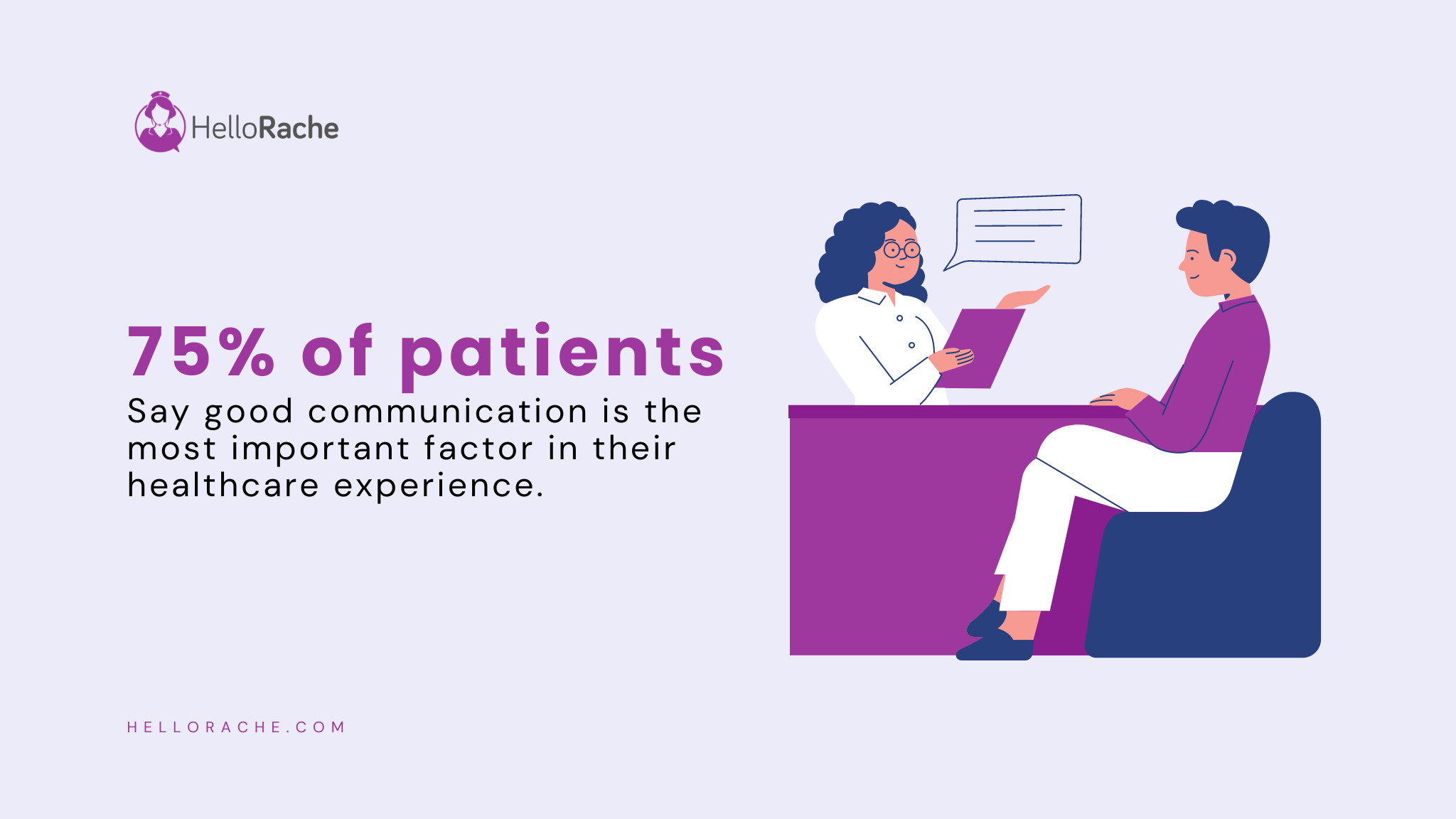
The Communication Challenges of an Optometry Practice
A high volume of patient communication often leads to optometry practices struggling to meet this demand. With at least a quarter of American adults visiting an optometrist every year, the numbers involved should come as no surprise. This leads to practices being inundated with requests to schedule appointments, dealing with reschedules, and answering patient queries. Often, staff will quickly become overwhelmed, a scenario which leads to delays, errors, and a missed opportunity to exceed your patients’ needs.
The main impact of poor communication is a drop in patient satisfaction and potential harm. Delays and missed information can lead to confusion and frustration. It’s as if, the patient will think, your practice doesn’t value them and is neglecting their duty of care. Very quickly this can harm patient loyalty, leading to negative reviews online and your patients seeking treatment with your competitors. This underlines the importance of tackling communication challenges promptly and effectively.
Understanding the Methods of Communication
The day-to-day operations of an optometry practice are varied, so the addition of an optometry assistant ensures your organization can cover these duties. But what are the main methods of communication to be found within an optometry practice? And how will an optometry assistant use these to communicate with your patients? Here are the three main communication methods that an optometry assistant might use:
With around 361 billion emails sent every day, it’s fair to say email represents one of the most important communication channels. This is why an optometry assistant is likely to use it as one of their main methods of communication. Emails can be used to send appointment reminders, follow-up instructions, and information on eye care services. For the patient, this provides them with detailed information and the ability to receive attachments e.g. test results. Finally, it provides a digital record which can easily be stored.
Telephone
Although it’s one of the oldest methods used for patient communication, the telephone remains a crucial element of patient communication. Using a telephone, an optometry assistant can contact patients directly to confirm appointments, discuss test results, and provide personalized care instructions. This communication method allows for the immediate exchange of communication and clarification that the information has been understood. It’s also provides an opportunity for patients to raise queries, making it highly effective for ensuring patient satisfaction.
Text Messages
Now considered a reliable technology and packed full of benefits, text messages have steadily become an essential communication method. Text messages are often used for short and quick reminders about upcoming appointments or to let patients know when their eyewear is ready to collect. For patients, particularly those who are constantly on the move, it ensures they receive the communication as soon as possible. And, timewise, text messages are highly efficient due to their short, concise nature.
An Optometry Assistant Solves All Your Problems
Now that you understand the patient communication challenges an optometry practice faces, and the available communication channels, it’s time to find out where an optometry assistant fits in. Luckily, due to their extensive skillset, an optometry assistant can improve your performance in the following areas:
Appointment Management
In an efficient optometry practice, an optometrist could easily see up to 50 patients per day. However, managing such a packed appointment schedule is far from simple. And communicating all of these appointments to your patients is crucial. An optometry assistant is perfectly placed to take on this responsibility. From creating appointment letters, generating reminder text messages, and telephoning patients to reschedule missed appointments, the presence of an optometry assistant allows you to enhance communication and keep your patients informed.
Digital Communications
An optometry assistant can oversee communication through your various digital channels, such as email, text messaging, and patient portals. This enables your practice to respond promptly to incoming messages and ensures patients receive the necessary information. Thanks to the wide range of channels available for digital communication, you can also cater to patient preferences, improving engagement levels and satisfaction.
Patient Inquiries
There’s a lot of patient anxiety surrounding optometry care, and this is why your practice will regularly be inundated with patient inquiries. Handling all of these inquiries can be taxing, and often the patient will request direct contact with their optometrist, pulling them away from crucial patient care. Thankfully, in most cases, an optometry assistant can take on the bulk of these inquiries, liaising with optometry professionals where necessary. This helps to alleviate patient concerns, builds trust, and establishes a positive experience.
Streamline Communication Channels
Your optometry assistant can make their presence felt in a major way by centralizing and managing all your communication channels. The demand of multiple channels is tough but balancing them gives you the chance to deliver an excellent service. It’s a streamlined approach which means you can simplify the flow of information through your practice, and the patient also benefits greatly. There’s less room for errors and your patients remain informed and up to date on their care.
Follow-Up Communications
Follow-ups are a critical part of optometry care, and your practice needs to prioritize this process. An optometrist, of course, is busy focusing directly on their patients and appointments, so they struggle to find the time to complete these follow-ups. But it doesn’t mean an optometry assistant can’t handle them. In fact, they’re more than capable of checking up on patients’ progress, arranging checkups, and addressing any concerns. This reinforces your commitment to patient care and maintains continuity of care.
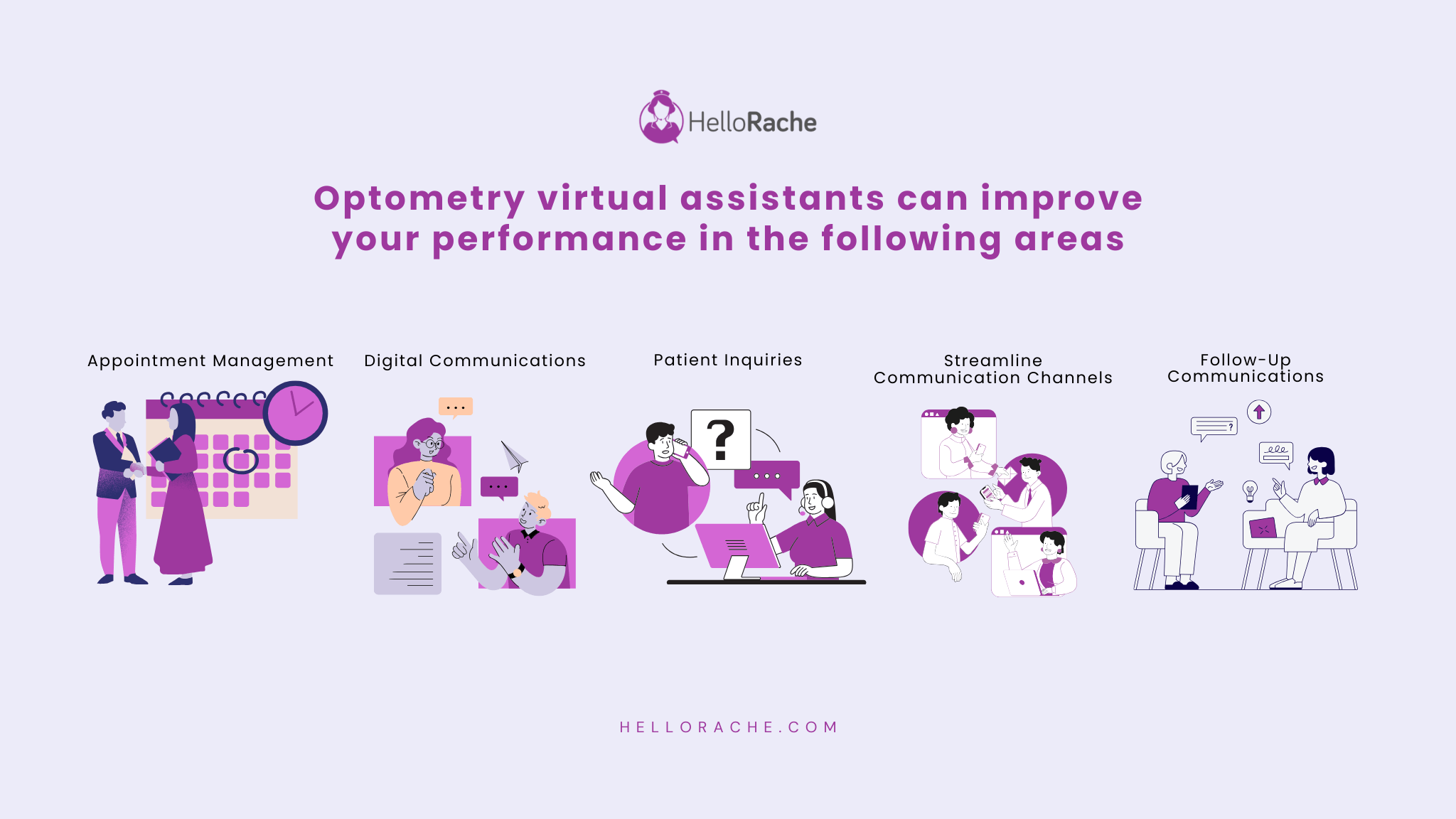
What are the Long-Term Benefits of Enhanced Communication?
Clearly, an optometry assistant can make a big difference to the day-to-day operations of your practice, but what are the long-term benefits of their impact on communication? The three main areas where enhanced communication can transform your service are:
Increased Patient Satisfaction
Satisfied patients are the ultimate aim for all optometry practices, and the professional communication skills of an optometry assistant can help you achieve this. By taking the time to engage with your patients, and see them through their optometry journey, you can demonstrate how much you value them and foster an invaluable sense of happiness.
Enhanced Patient Loyalty
When you handle patient communication effectively, you quickly begin to build trust and loyalty with your patients. After all, the optometry practice who maintains communication with their patients – e.g. sending appointment reminders and arranging follow-up calls – is always going to be considered trustworthy and efficient. A patient/provider relationship of this quality will only encourage patients to return and refer others.
Improved Efficiency
One of the positive side effects of an optometry assistant dealing with your communication duties is that it frees up the rest of your staff. Therefore, rather than becoming burdened with tasks such as appointment scheduling, your team can focus on their core duties. This allows you to improve your efficiency by allowing team members to focus on what they’re best at e.g. strategic planning, marketing, or sales. It’s a sure-fire way to maximize growth and push your practice forwards.
How Can an Optometry Virtual Assistant Help?
It’s possible to improve on the optometry assistant, and this is achieved by bringing in an optometry virtual assistant. Thanks to modern internet connections, an optometry virtual assistant can use these high speeds to complete tasks such as videoconferencing, data transfer, and cloud access from a remote location. As long as they have an internet connection and a PC, all you need to provide them with is a set of login credentials for your IT infrastructure.
An optometry assistant can achieve almost everything their in-house equivalent can, but with a number of added benefits. Cost wise, an optometry virtual assistant can save you up to $11,000 over a non-remote worker. These savings are a result of not having to pay out for equipment, vacation pay, or pension contributions. And remember, virtual assistants can be located anywhere in the world, so you can choose from a global pool of talent to pick the perfect optometry virtual assistant. Finally, virtual assistants can be hired on a flexible basis, making scalability much easier.
It's Time to Hire an Optometry Virtual Assistant
You’re no doubt wondering where you can get started with hiring an optometry virtual assistant. Luckily, Hello Rache has all the answers, and the very best virtual assistants. With a flat rate of just $9.50 per hour, we offer amazing value for money when it comes to finding your perfect optometry virtual assistant. And with our virtual assistants located in the Philippines, you’re guaranteed a virtual assistant who is committed to your service and has excellent communication skills.
So, it’s time to get started on your optometry virtual assistant journey, and you can take that first step by clicking here to book a call with us.
Discover what Hello Rache can do for you and your practice
Tell us a little about your practice & we will contact you within 24 hours.

